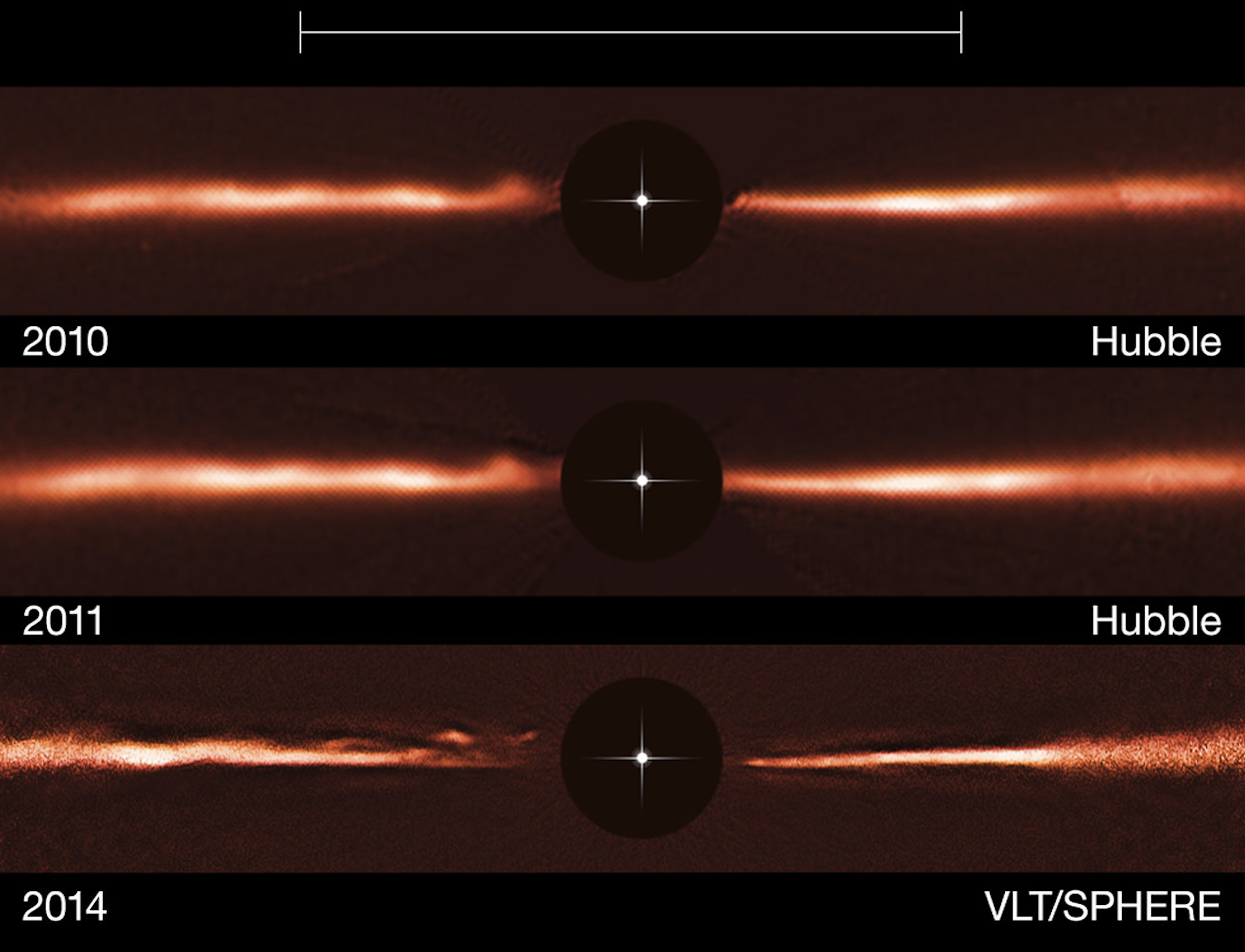AU Mic system
Second-author paper: Probing the innermost region of the AU Microscopii debris disc, Gallenne, Desgrange et al., 2022, Astronomy & Astrophysics.
The AU Mic system is young and has a nearby M-dwarf star harbouring a circumstellar debris disc. It has two discovered planets, AU Mic b and c on orbital periods of 8.5 days and 18.9 days (semi-major axes of 0.07 au and 0.11), respectively. In addition, large-scale structures within the disc were discovered and are moving outwards at high velocity.

The debris disk AU Mic seen edge-on. Image credits: ESO, NASA, ESA.
Paper: Boccaletti et al. 2015, Nature, “Fast-moving features in the debris disk around AU Microscopii".
We aim to study this system with the highest spatial resolution in order to probe the innermost regions and to search for additional low-mass companions or set detection limits. The star was observed with two different high-angular resolution techniques probing complementary spatial scales. We obtained new Ks-band sparse aperture masking (SAM) observations with VLT/SPHERE-SAM, which we combined with interferometric data from VLT/NaCo-SAM, VLTI/PIONIER and VLTI/GRAVITY, and direct-imaging observation from VLT/SPHERE, see Figures below.

Detection limits constraints on AU Mic by combining direct-imaging and interferometric measurements.
Figure 6 from Gallenne, Desgrange et al. (2022)
Adding the radial-velocity (RV) measurements enable us to even better constrain the presence of giant companions below 1 au. For instance, a companion of 3 Jupiter-mass at a semi-major axis of 0.1 au is ruled out by RV data.

Detection limits constraints on AU Mic by combining radial velocity, direct-imaging and interferometric measurements.
Figure 5 from Gallenne, Desgrange et al. (2022)
My work was in this project was to compute the detection limits on the AU Mic system from the interferometric observations VLT/SPHERE-SAM, VLT/NaCo-SAM, VLTI/PIONIER and VLTI/GRAVITY, direct-imaging observation VLT/SPHERE, and radial-velocity data. I used the tool pyMESS2 (pythonized version of MESS2, see Lannier et al. 2017)